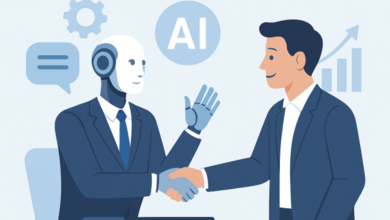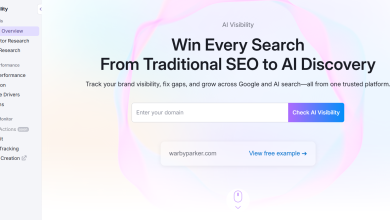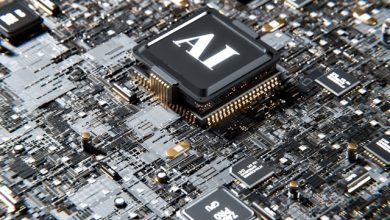
AI formally launched as a field in 1956 at the Dartmouth Summer Research Project on Artificial Intelligence, where leading thinkers gathered to explore the idea – sparked by British mathematician Alan Turing’s 1950 question, “Can machines think?” – that thinking may not be unique to humans. In the decades since, AI has advanced in fits and starts but recently has grown at an exponential pace, reshaping industries from healthcare to finance. And now, it’s transforming the practice of law.
Traditionally known for its reliance on precedent, paper trails, and painstaking manual review, the legal profession is entering a new era of efficiency. Particularly in high-stakes litigation, lawyers are harnessing AI-powered solutions that can read, analyze, and extract insights from legal documents at scale. And clients are beginning to expect their legal teams to work both smarter and faster.
One area undergoing particularly striking transformation is deposition analysis, a time-consuming and critical stage in litigation. As legal teams face increasing pressure to do more with less, AI is emerging as a key enabler, streamlining hours of transcript review into minutes and surfacing strategic insights that might otherwise be buried in dense legal text.
The Bottleneck of Manual Transcript Review
Depositions are a cornerstone of civil litigation in the U.S. They provide attorneys with sworn testimony that can shape settlement discussions, summary judgment motions, and trial strategy. Yet reviewing deposition transcripts remains one of the most resource-intensive tasks in the litigation lifecycle.
Too often, attorneys and paralegals spend dozens of hours combing through lengthy documents – highlighting testimony, flagging contradictions, identifying key admissions, and organizing timelines. This work is both cognitively demanding and susceptible to human error, especially in complex cases involving multiple witnesses and overlapping narratives.
Yet clients are increasingly reluctant to pay for the billable hours required for manual deposition summarization and review, pushing law firms and lawyers to work more accurately and efficiently. Recognizing this crucial bottleneck, legaltech companies have deployed AI to solve these challenges and equip legal teams with the information they need in a fraction of the time.
What AI Can Do for Deposition Analysis
Recent advances in natural language processing (NLP), semantic search, and multimodal AI are making it possible to automate much of the deposition review process. And it’s doing so with a degree of speed and precision that traditional methods can’t match.
Key capabilities now emerging include:
- Automated Deposition Summaries: NLP-powered systems can generate high-level, topical, or page-line summaries from raw transcripts, reducing hours of review to a matter of minutes. This allows legal teams to quickly triage large volumes of testimony and focus on strategic analysis rather than mechanical review.
- Semantic Search and Dynamic Querying: Unlike simple keyword search, semantic AI can understand the meaning behind a question and return relevant passages, even when the language used in the transcript differs from the query. For example, a query like “Did the witness know about the defect before the accident?” might surface indirect admissions and nuanced testimony that would be missed by keyword-based search tools.
- Contradiction and Admission Detection: AI models now can identify inconsistencies and key statements within and across multiple depositions. This is especially valuable in complex litigation, where different witnesses may offer competing narratives that evolve over time. Having an index of the affirmative statements from each deponent can be critical in subsequent depositions or impeachment of witnesses in trial.
- Exhibit and Chronology Summaries: Some tools can even generate summaries of referenced exhibits or automatically construct timelines based on witness statements, helping legal teams visualize case events and link them to documentary evidence.
- Video Behavioral Analysis: Beyond volumes of text, AI also is being applied to video footage of depositions. Using computer vision and behavioral analytics, these tools can flag a person’s moments of stress, hesitation, or confidence. This capability provides additional context that can inform credibility assessments, guide cross-examination or assist in witness preparation.
Why It Matters for the Legal Industry
As AI transforms industries, it may be easy to think of the legal field as a slow adopter. The law must proceed with caution, and confidentiality is paramount. Yet the volume of data in litigation continues to balloon, particularly with the explosion of electronically stored information (ESI). Tools that can automate or accelerate knowledge extraction are no longer a luxury; they’re a necessity.
Litigators are already beginning to embrace these technologies to:
- Accelerate trial preparation
- Improve accuracy and reduce oversight
- Spot critical inconsistencies or themes early
- Lower costs for clients
- Scale small teams to handle large cases
And just as importantly, these tools are becoming increasingly user-friendly. Legal professionals don’t need to be data scientists to make use of AI-driven insights. Many of the newest platforms are built with intuitive interfaces that fit directly into the way legal teams already work, minimizing disruption while maximizing impact.
From Practice to Strategy
The application of AI to deposition review reflects a broader evolution occurring across professional services: a shift from manual labor to augmented intelligence. In the legal field, this transformation allows attorneys to redirect their focus from administrative or clerical tasks such as document review, transcription, and fact-checking to more substantive areas of focus, like legal analysis, case strategy, and client advocacy. What once required hours of manual review can now be streamlined, organized, and flagged by intelligent systems, dramatically improving both efficiency and accuracy.
Importantly, this does not signal the replacement of lawyers by machines; far from it. Instead, AI is reshaping the legal workflow to amplify human capability. By offloading repetitive and time-intensive responsibilities, AI tools create more space for attorneys to apply their judgment, creativity, and expertise where it matters most.
This rebalancing of effort – from laborious process to high-level thinking – enables legal professionals to work more strategically. It allows them to serve clients more effectively and engage more meaningfully in the complex decision-making that defines the practice of law.
What’s Coming Next
As large language models become more sophisticated and fine-tuned for legal language, the potential for AI-enabled solutions in litigation will only expand. We’re already seeing the first wave of products that combine natural language understanding with domain-specific training, enabling nuanced, contextual analysis of legal content.
For a profession built on facts, logic, and persuasion, AI offers a powerful new ally, one that doesn’t just analyze what was said, but helps legal teams understand what matters. Whether it’s helping an associate identify the linchpin of a deposition or enabling a solo practitioner to compete in complex multi-party litigation, AI-driven transcript analysis is proving that even in law—a profession rooted in centuries of tradition—innovation has found its place.





